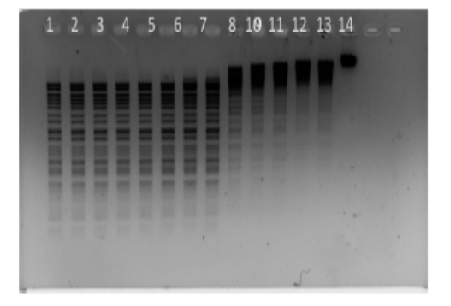


Indian Journal of Science and Technology
DOI: 10.17485/IJST/v16sp1.msc29
Year: 2023, Volume: 16, Issue: Special Issue 1, Pages: 219-227
Original Article
Nancy Lalhriatpuii1, Vanessa C Basaiawmoit2, Bindu Damodaran3, K P Amarnath4, Selvam Arjunan5, Felicia Lalremruati1, Zothanpuia1*
1Department of Biotechnology/Life Sciences, Pachhunga University College, Mizoram University, Mizoram, India
2Department of Environmental Education, St Anthony’s College Extension Byndihati Campus, Meghalaya, India
3GTS Manufacturing Facility, Invitrogen Bioservice, Bangalore, Karnataka, India
4Criyagen Agri & Biotech, Bangalore, Karnataka, India
5Department of Biotechnology/Faculty of Life & Allied Health Sciences, Ramaiah University of Applied Sciences, Gnanagangothri Campus, Bangalore, Karnataka, India
*Corresponding Author
Email: [email protected]
Received Date:23 January 2023, Accepted Date:18 June 2023, Published Date:13 September 2023
Objectives: The aim is to identify and characterize the restriction enzyme activity of bacteria from a sewage sample. Methods: The sample was plated on Nutrient Agar, Luria Bertani, and Tryptone Soy Broth Agar. The selected bacteria were screened for restriction enzyme activity and mass cultured. Extraction and purification of the enzyme were performed using column chromatography (PC 11 column, HTP column, and HPS column) and dialysis. Bacterial identification was performed using Gram’s staining and 16S rRNA gene sequencing. Findings: A total of 2138 bacterial colonies were retrieved using Nutrient Agar, Luria Bertani, and Tryptone Soy Broth Agar. From the enzymatic screening, bacterial isolate strain no. 8 was selected, and the extraction and purification of restriction enzymes from the selected bacterial strain were performed using column chromatography. After dialysis, the enzyme showed complete activity in 1:6 dilutions; hence, the unit of the enzyme is 6 units. The isolated bacterial strain was found to be a gram-positive rodshaped Bacillus after Gram’s staining was performed. The strain was identified using 16S rRNA gene sequencing technology, and it was found out that it has 97.91% homology with Bacillus sp. Novelty: The study reported sewage water derived Bacillus sp. having restriction enzyme.
Keywords: Bacillus sp; Column chromatography; Restriction enzymes; Sewage
© 2023 Lalhriatpuii et al. This is an open-access article distributed under the terms of the Creative Commons Attribution License, which permits unrestricted use, distribution, and reproduction in any medium, provided the original author and source are credited. Published By Indian Society for Education and Environment (iSee)
Subscribe now for latest articles and news.